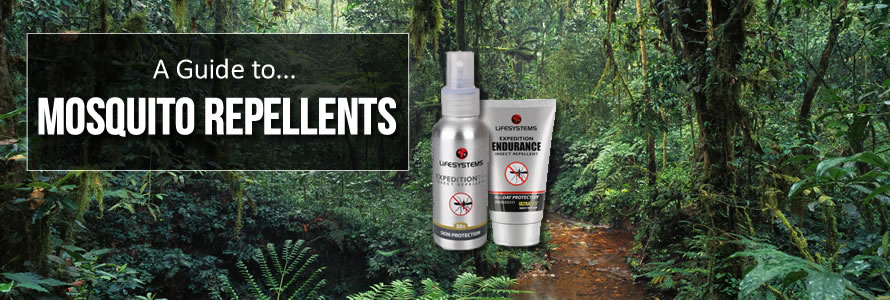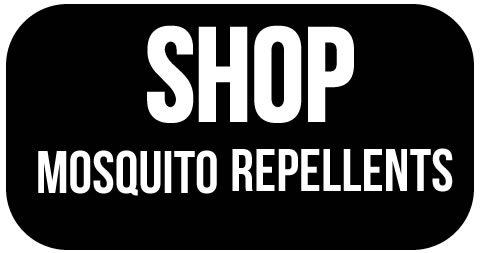Choosing the right mosquito repellent for travelling can be a daunting task, will it be strong enough for high risk Malaria areas? Will your skin have a reaction? How much mosquito repellent should you take with you? These are all common questions we are asked here at the Gap Year Travel Store on a regular basis, so we thought we’d try and answer these FAQ’s in this post.
Which Mosquito Repellent Do I Need?
With so many different options both DEET based and natural to choose from, it can be a bit of a minefield choosing the right insect repellent for your destination. First and foremost, we recommend checking out the NHS Fit for Travel website to view the Malaria map for your destination. The risk of Malaria and other tropical diseases can vary from one part of a country to the next, so you need to ensure you’re aware of the risks when choosing your mosquito repellent.
For Malarial areas, you should opt for a DEET (Diethyl-metamtoluamide) based repellent with no less than a 50% concentration to ensure you are well protected from Malaria and other tropical diseases. There are also higher concentrations currently available, but as of 2017, new Biocidal Product Regulations will mean that DEET repellents over 50% will no longer be available. 50% DEET formulas are considered as high protection and are suitable for use in countries with a risk of Malaria and other tropical diseases. You should also consider anti-malarial medication in high risk areas, so make sure you discuss this option with a GP or local travel clinic before travelling.
For low risk areas, where there is no risk of tropical disease, you can use a lower concentration of DEET (20-30%) or even a natural mosquito repellent. Natural mosquito repellents usually contain either Saltidin or Citriodiol, an ingredient derived from lemon eucalyptus. Natural repellents are much kinder to skin compared to harsher DEET repellents, so are popular among travellers with sensitive skin.
How Much Mosquito Repellent Do I Need?
This can be a tricky one, but we generally recommend 60ml of mosquito repellent per person, per week. There are obviously a few factors to consider when buying your mosquito repellent, which you can see below…
- Humidity & hot temperatures – In hot and humid conditions, you are likely to sweat more profusely and therefore dilute your repellent and it will evaporate at a faster rate. With this in mind, it is likely you will need to re-apply more regularly than the manufacturer’s recommended re-application period…Therefore, you will end up using up your repellent much quicker.
- Your size – If you’re tall or of a bigger build, you will have a bigger area to cover with repellent, so will need more than the average sized person!
- Your Activity – Whether you’re trekking through rainforests or taking part in other vigorous activities during your trip, you will sweat more than usual, so more regular applications are likely to be needed for the same reasons mentioned in point number 1!
I’m Travelling with Children, Which Mosquito Repellent Should I use?
Higher strength repellents are not recommended for children, DEET concentrations of around 20-30% are suitable for use on children over the age of 2 years. 50% DEET formulas (and higher) should be avoided until your child is over 12 years of age. Pyramid Natural Mosquito repellent is suitable for use on children over 6 months of age and contains Citriodiol.
What Else Can I Use to Prevent Insect Bites When Travelling?
There are a number of insect defence products you can use to prevent bites when travelling, and we recommend these as additional protection to your mosquito repellent.
- Wrist & Ankle Bands – Either made from fabric or silicone material, mosquito repellent bands provide additional mosquito protection by creating a protective ‘halo’ around you. For the most effective level of protection, you should use a band on each wrist and each ankle. Both DEET bands and natural options are available. You can also store them in a re-sealable plastic bag when you’re not using them to prolong their lifespan.
- Plug-in Mosquito Repellents – Mosquito Repellent Devices are another good way of providing additional protection from insects when travelling. Available with either tablets or repellent liquid, you can simply plug them into a wall socket and they will kill any insects that enter your room.
- Mosquito Nets – Mosquito nets come in a range of different shapes to suit all types of accommodation when travelling, including wedge, ridge, box and bell shapes. You can also get both single and double sized options. Always ensure your net is treated with a good insecticide, such as permethrin, as this stops insects from landing on your net. You should also make sure that your mosquito net has a hole count of no less than 156 holes per square inch, as this is the minimum specification stated by the World Health Organisation. If you’re going on a rainforest trek, you might want to consider a mosquito head net, as these help protect your face and neck from biting insects.
How Do I Apply Mosquito Repellent?
You only need to apply mosquito repellent to exposed areas of skin, not the entire body. You also shouldn’t apply it to clothing, as the chemicals can damage them. There are special mosquito repellent fabric sprays available, which can be used to treat clothing for additional protection.
Always ensure that you do a patch test on a small area of skin before applying mosquito repellent to other areas of the body, just in case your skin has a reaction. You should also take care to avoid applying repellents to irritated skin, cuts or wounds.
To apply mosquito repellent sprays to your face, you should always spray a small amount onto your hands and gently rub onto your face. Never spray your repellent directly on your face, as this carries a high risk of spraying it in your eyes. Mosquito repellent gels and lotions are a good option for easy application and less is wasted in the air compared to spray alternatives.
Our Top 5 Mosquito Repellents
| Repellent | Active Ingredient | Why we like it… | Suitable for |
| Lifesystems Expedition 50+ | 50% DEET |
|
Malarial Areas |
| Care Plus 30% DEET Gel | 30% DEET |
|
Non-Malarial Areas & European Countries |
| Pyramid Repel Sensitive | 20% Saltidin |
|
Non-Malarial Areas & European Countries |
| Jungle Formula Maximum | 50% DEET |
|
Malarial Areas |
| Lifesystems Endurance Cream | 34% Micro-encapsulated DEET |
|
Non Malarial Areas |


